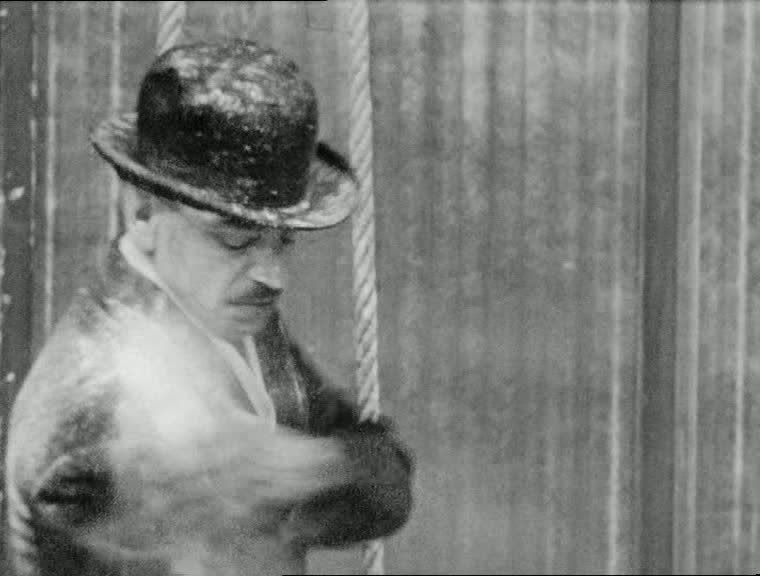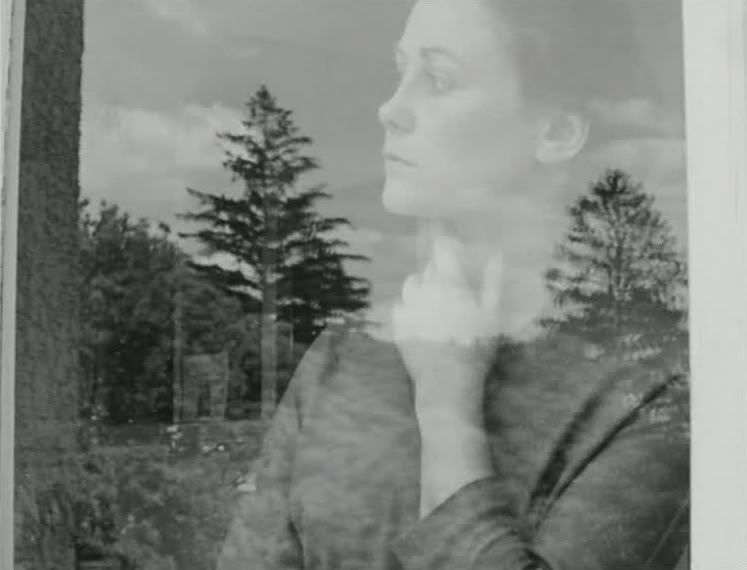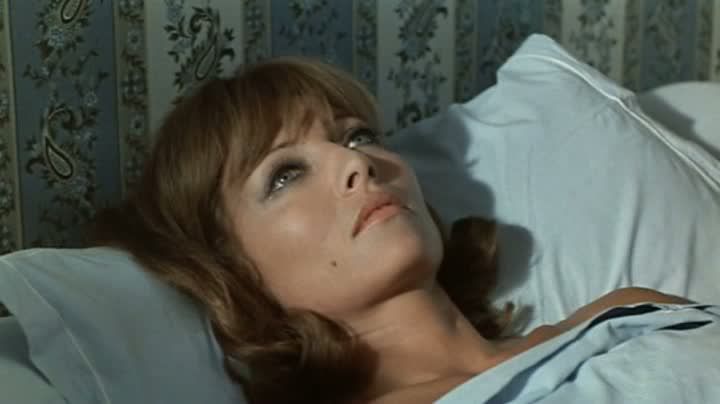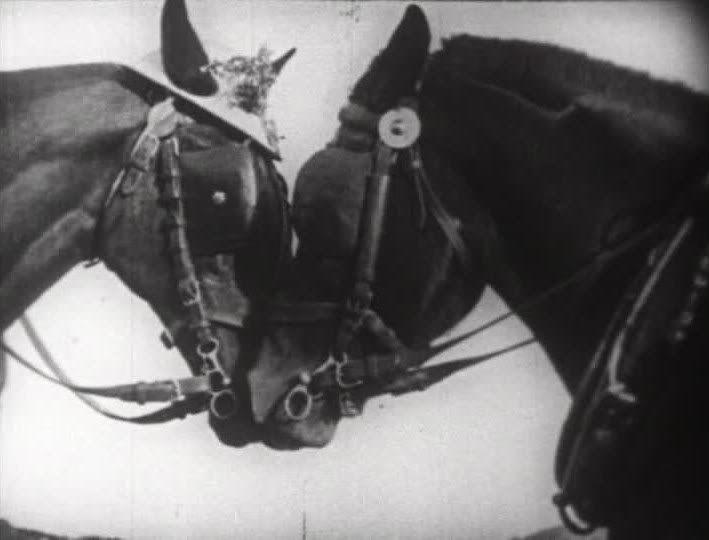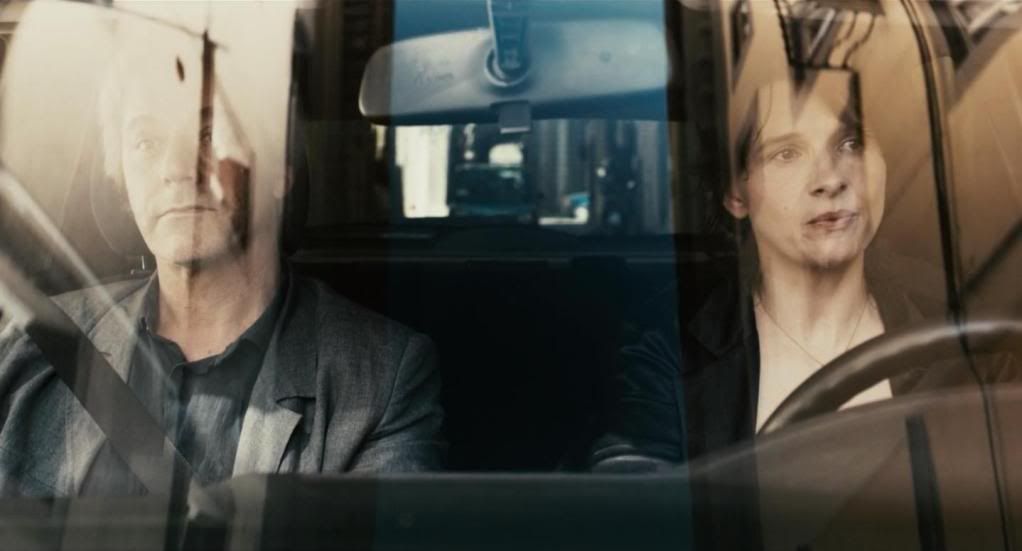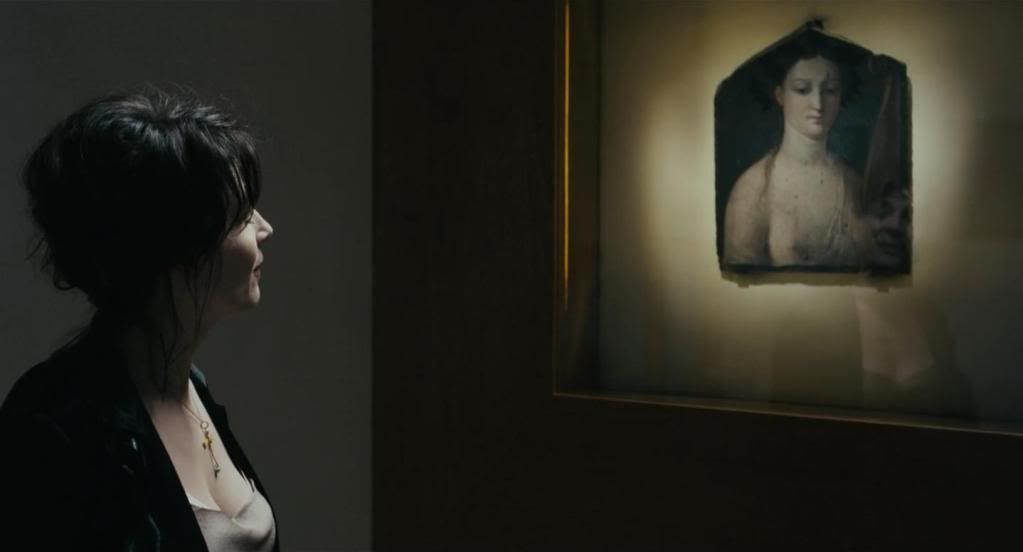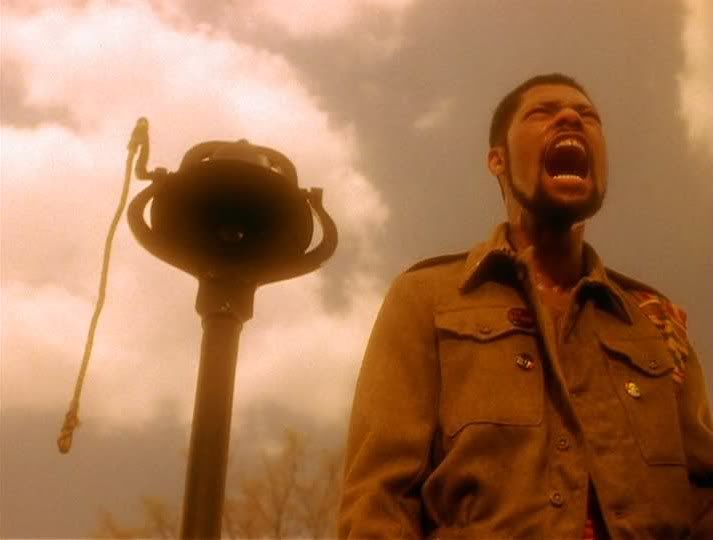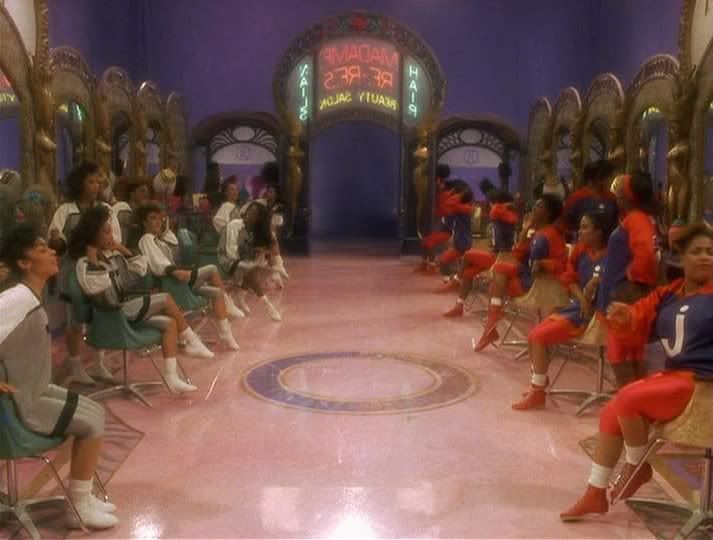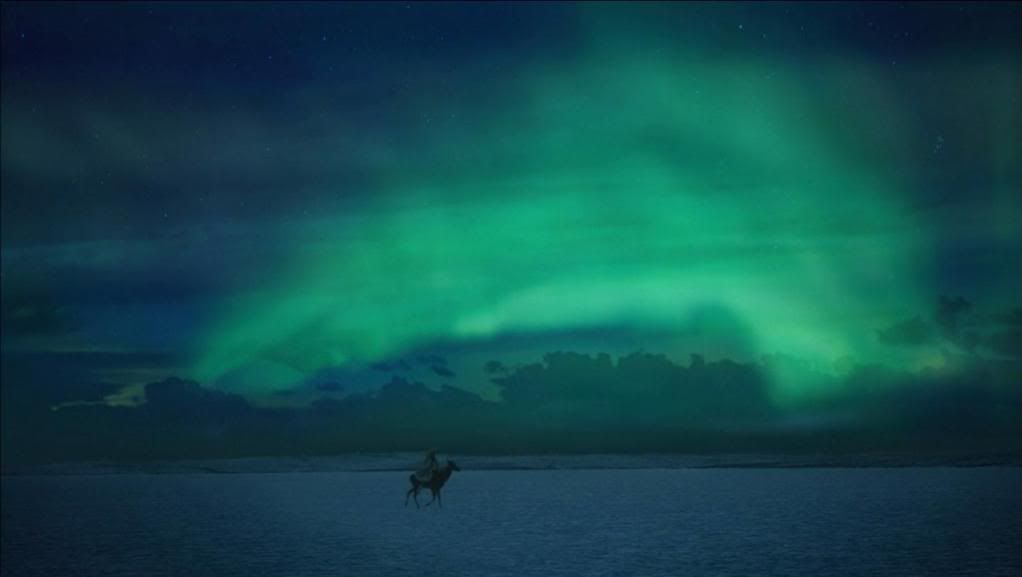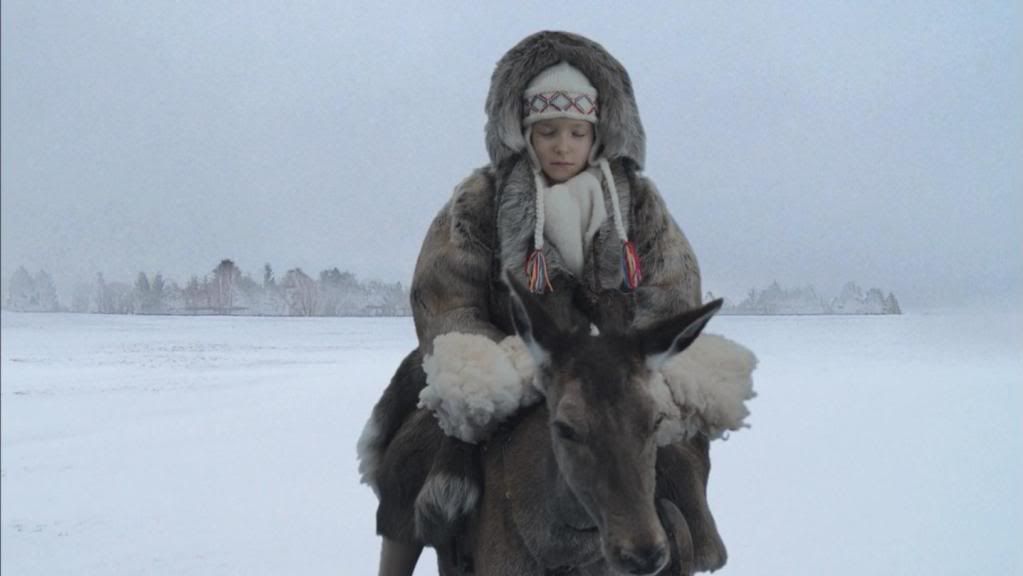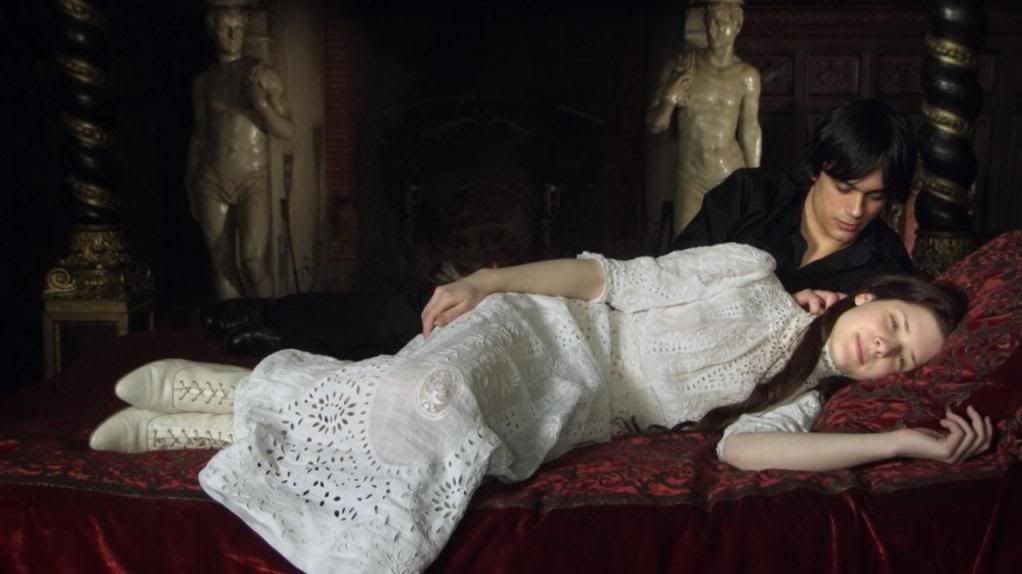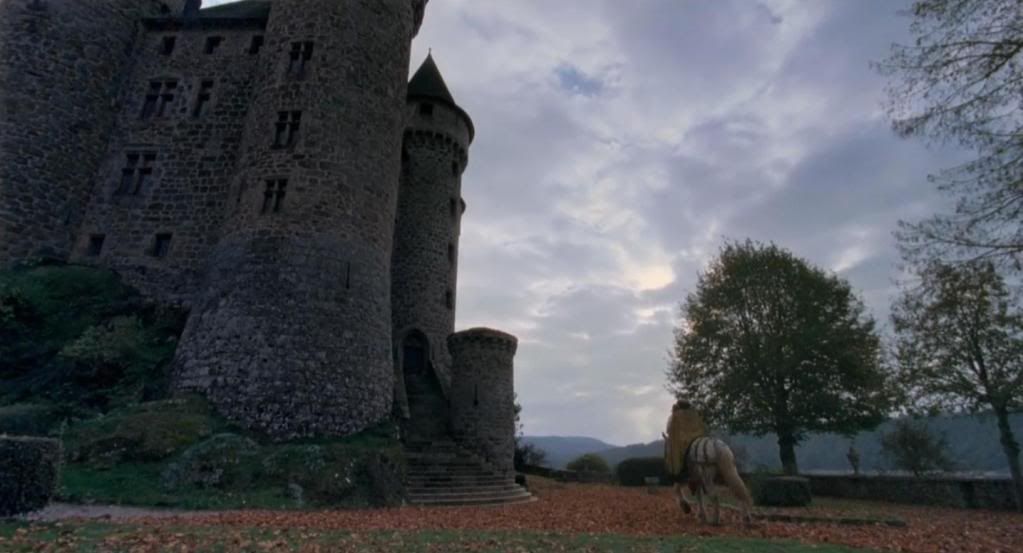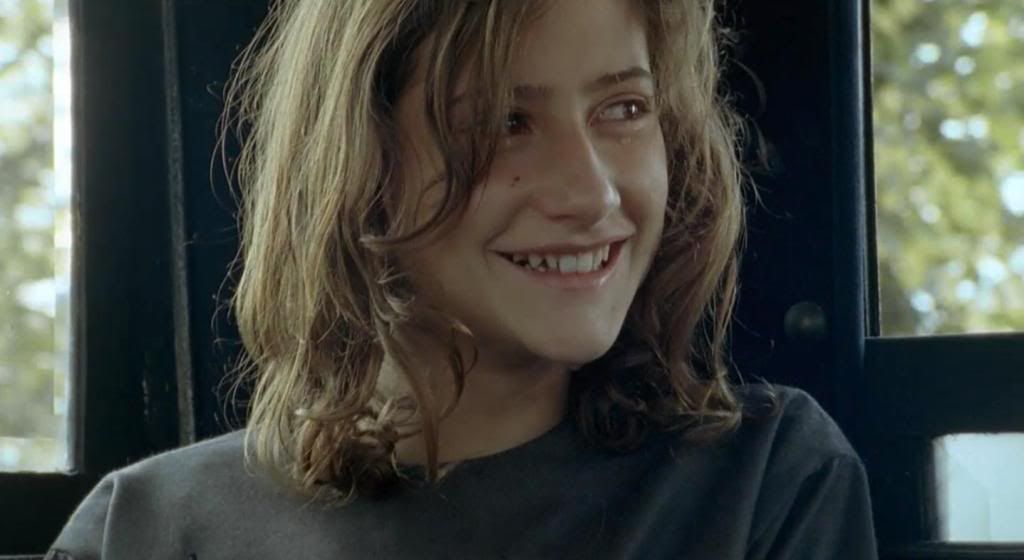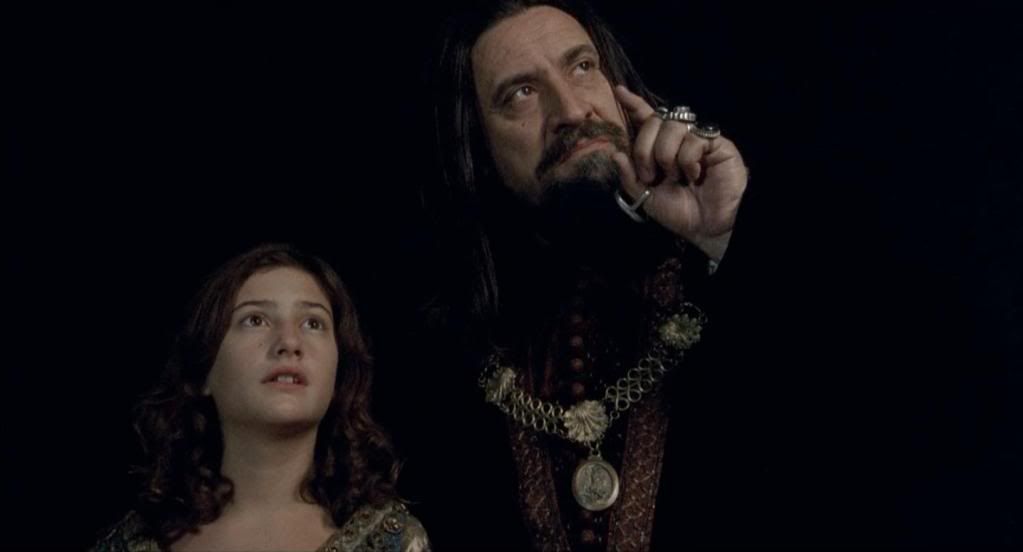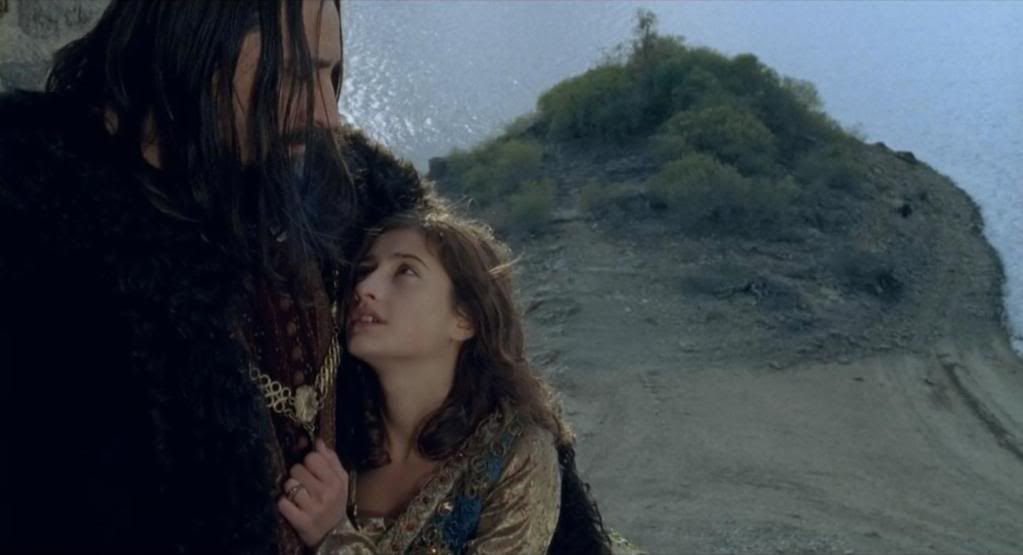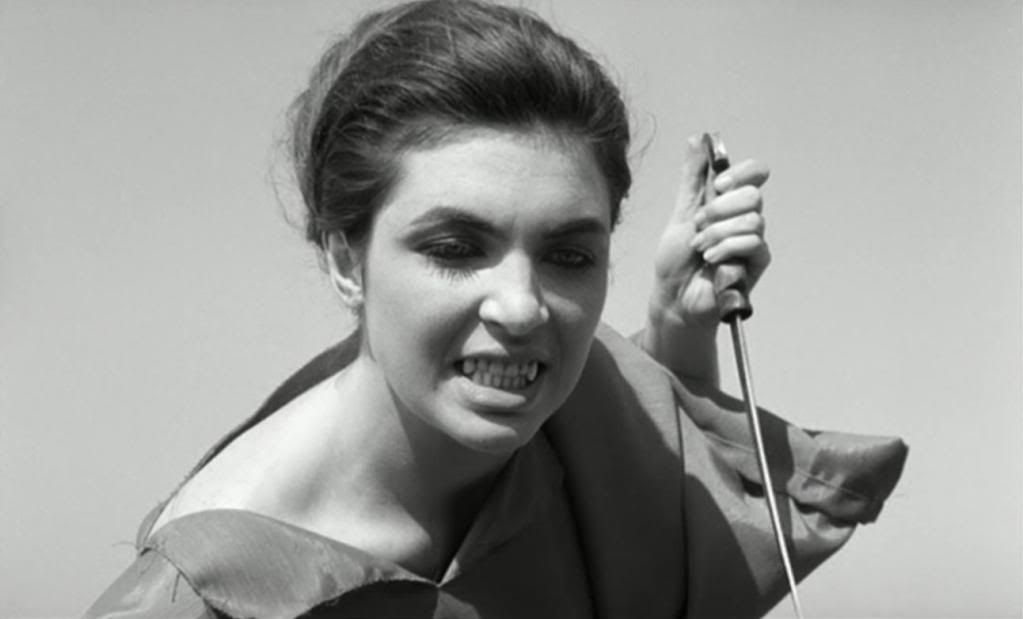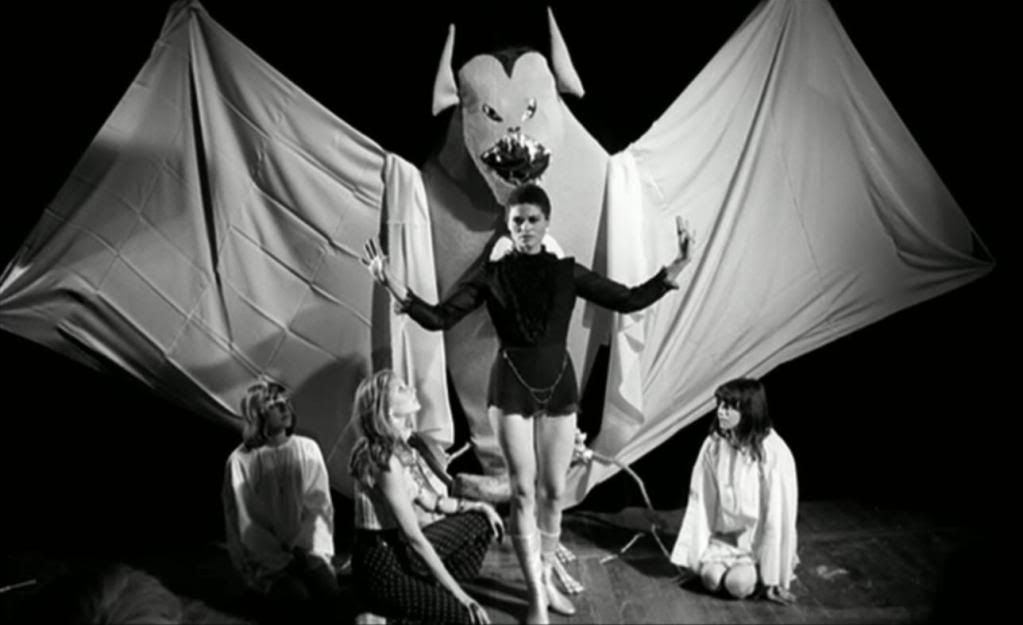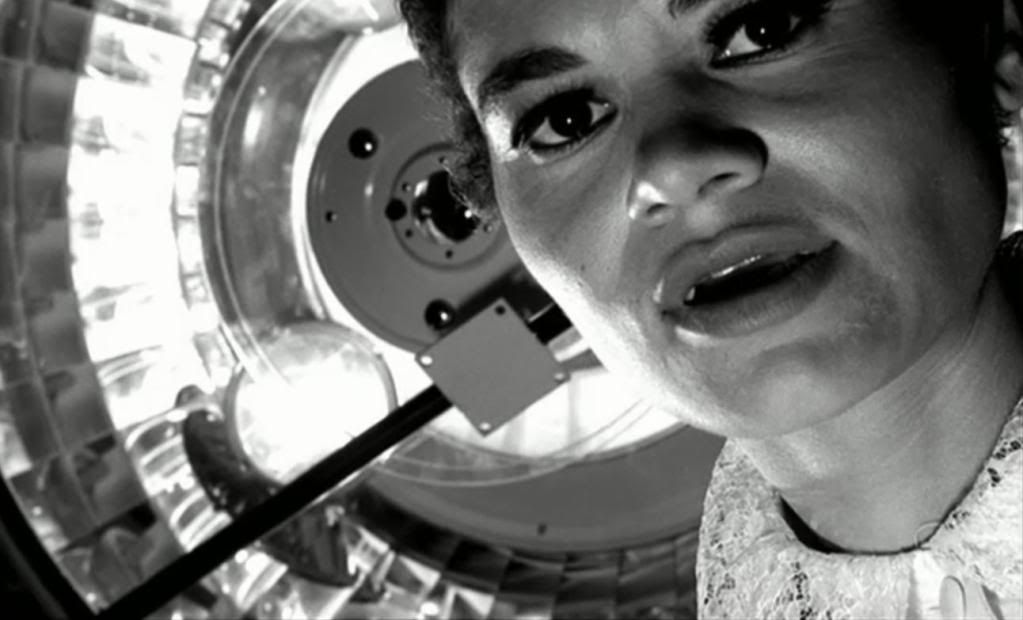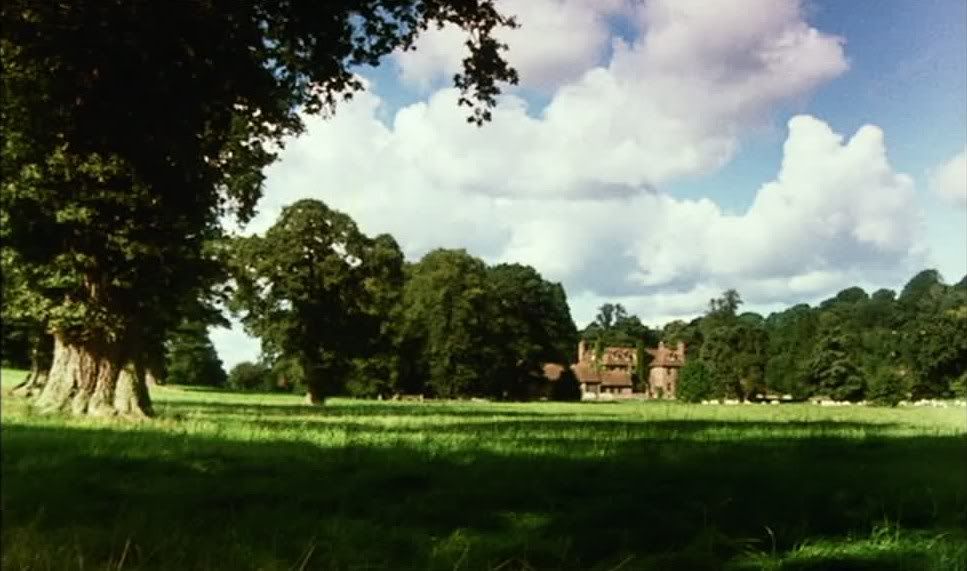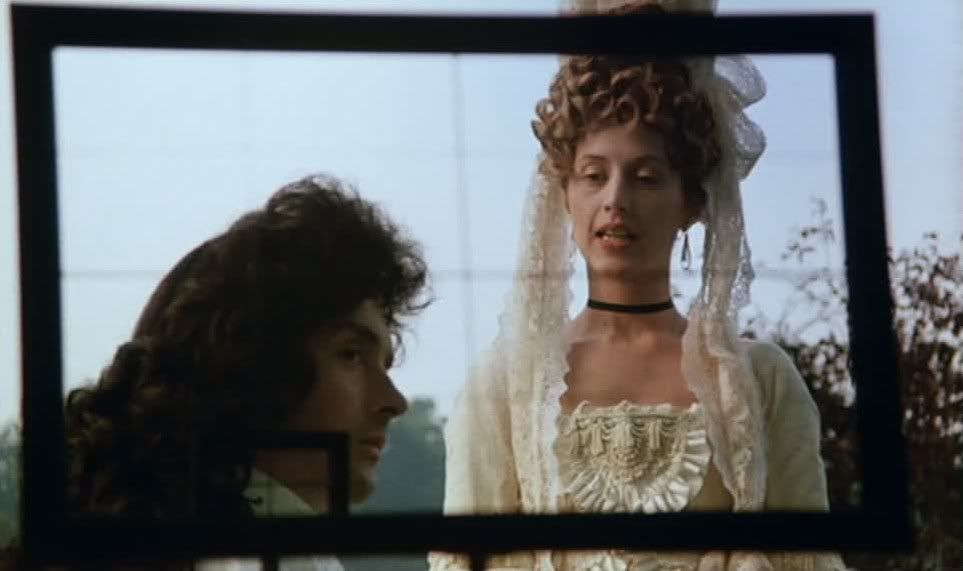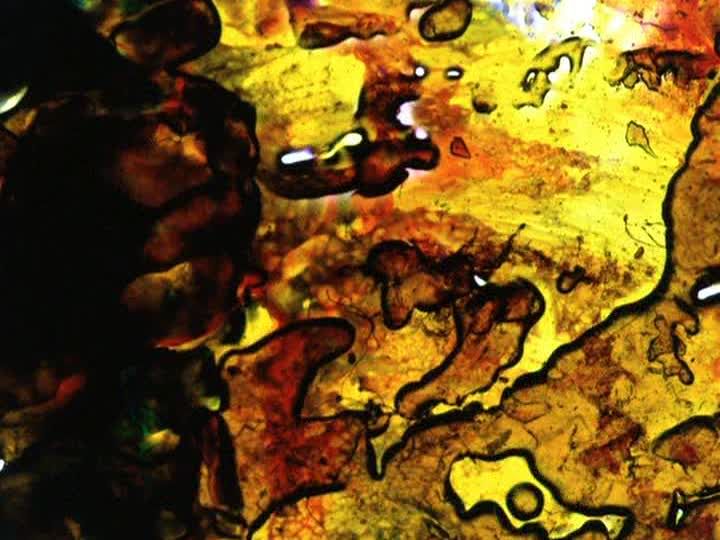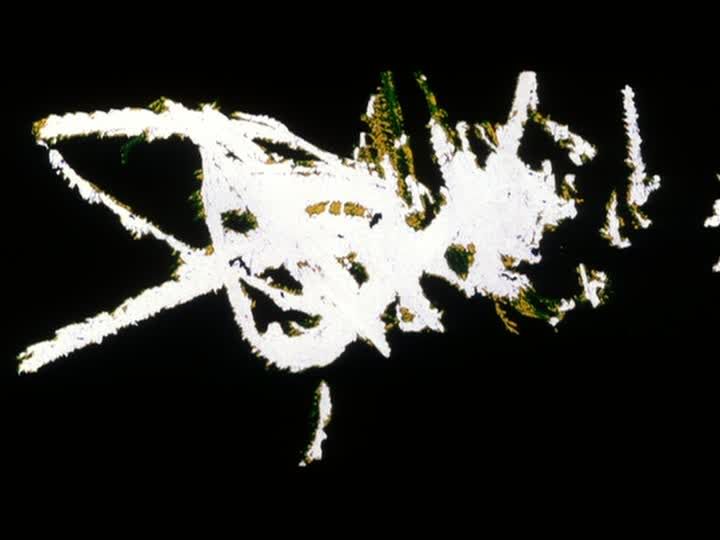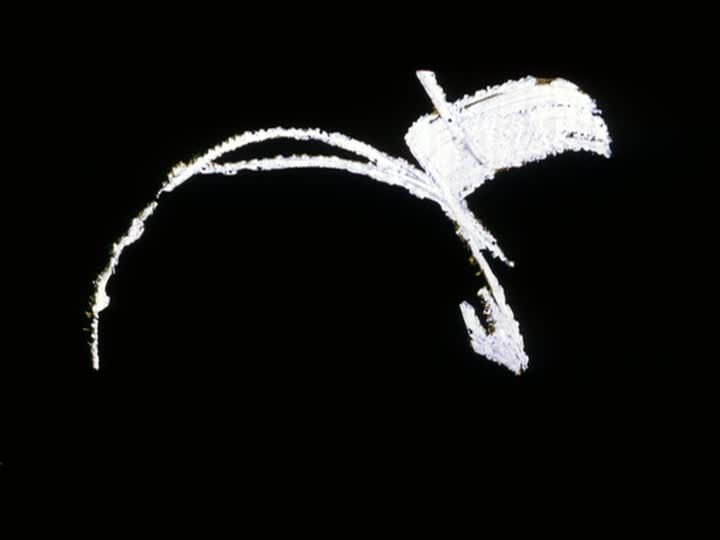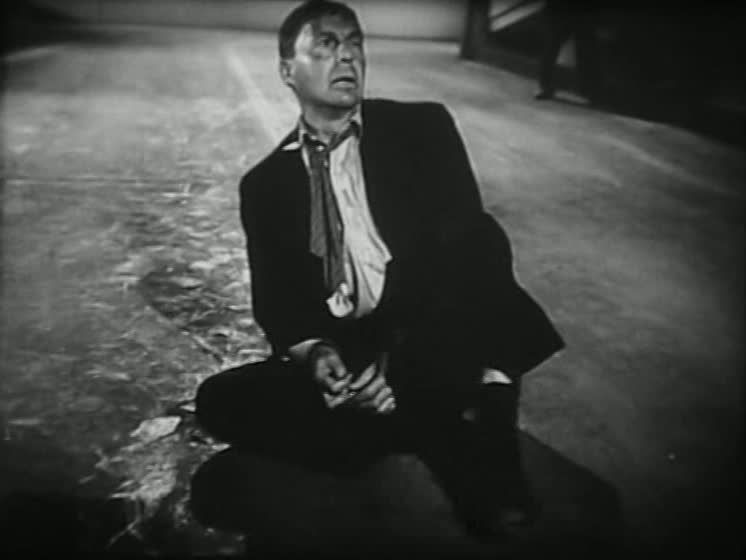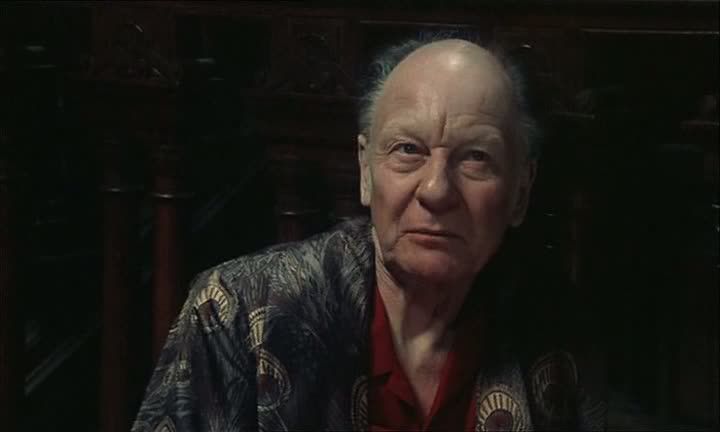
Editing is the key to the cinema of Alain Resnais, the crux of his work. Through the cut, the filmmaker controls the flow of space and time, controlling what's seen and not seen, where a scene starts and where it ends, and few other directors have made this truism so explicit in their art. For Resnais, this process has often been a cinematic analogue for the workings of memory, for the self-editing capacity of the human mind. This is especially apparent in Providence, his first English-language film, in which the dying writer Clive Langham (John Gielgud), suffering in agony from the cancer tearing him apart, constructs an elaborate and surrealistic narrative involving his relatives. Clive is reconstructing his past, casting his son Claude (Dirk Bogarde), his bastard son Kevin (David Warner), and Claude's wife Sonia (Ellen Burstyn) in a strange drama of adultery and psychological abuse, imagining them suffering emotionally as he's suffering physically, imagining them as cruel and petty and vile.
And it's editing that allows him to do this. The film's opening is a disorienting flow of seemingly disconnected scenes and images, gradually taking shape as Clive's voiceover intrudes, commenting on the action, shaping it into the form that he wants to. There's an obvious connection between Clive's narrative direction and the role of the filmmaker. Clive begins speaking over the images, banishing certain images and characters from view, expressing his appreciation for other moments, waffling over what he wants to see next. He frequently loses control of the narrative — Kevin enters a room instead of Claude, a door is sometimes located down a long stairway and sometimes on level ground, a soccer player described as Kevin's brother sometimes jogs into the scene without warning or purpose — and has to start again, to shift the scene, his words demanding a cut, a change of scene, a restructuring of the images. He sometimes speaks from off camera, giving directions to the "actors" in this narrative, suggesting lines that they then repeat; in one hilariously disjunctive moment, Sonia opens her mouth to speak and it's Clive's dubbed voice that comes out, a reminder that the characters in a film are simply giving voice to ideas and words decided upon by a screenwriter (British playwright David Mercer in this case) and a director (Resnais).
Indeed, at some points Clive, through his imagined characters, sometimes seems to be directly parroting the voice of Mercer and/or Resnais. In one of the most telling moments, Clive says, monologuing over a love scene between Claude and his mistress Helen (Elaine Stritch), "It's been said about my work that the search for style has often resulted in a lack of feeling... However, I'd put it another way, I'd say that style is feeling, in its most elegant and economical expression." That's a pretty apt summary of Resnais' work, which is far more emotional than it's often given credit for, the emotion arising from the rigorous application of formal structures. The style of this film is ravishing, too, with an understated elegance that sometimes gives way to bursts of surreal but subtle stylization. In particular, there's a certain veranda where the characters sometimes meet and talk, the background changing from one patently artificial matte painting to another depending on the mood and context of their talk: a gorgeous, perpetually sunny seaside with painted waves for evocations of childhood pastoral perfection, and a gloomy, cloudy backdrop of grim little houses stretching off into the distance when childhood memories are far from the mind.
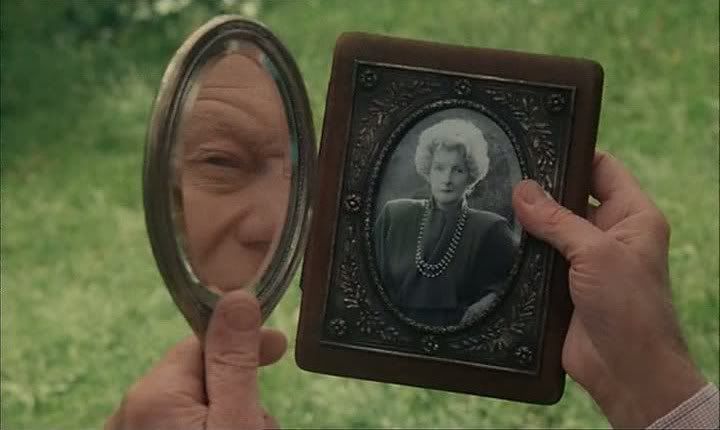
It gradually becomes clear over the course of the film that Clive's impressions of his family are not to be taken at face value. His narrative at times seems to tear apart as the characters stop playing their parts, instead voicing complaints and recriminations addressed, not at each other, but at Clive; it's as though the author's creations are refusing to play their parts, turning on their creator to express the bitter, unhappy feelings haunting this bitter dying man. He seems to be projecting his own failings and his own guilt onto his relatives, creating a narrative that contains, coded within it, the real anguish he feels over his cruelty towards his wife and son, his guilt about his wife's suicide, his regrets about the philandering he did while she was still alive. His wife appears several times, trapped in a concentration camp guarded by soldiers who are rounding up civilians and killing them, and his wife is also echoed in Sonia and Helen, both of them physically similar to the woman Clive loved, both of them suggesting the Freudian resonance between wives and mothers, lovers and mothers.
That imagery of war, terrorism, and concentration camps haunts the film, appearing as psychic tears in the story Clive is constructing, a war felt in the gunfire and explosions that pop and crack in the background of the soundtrack, only occasionally commented on by the characters, who mostly seem to have internalized and grown accustomed to this constant state of violence and breakdown. It's a potent metaphor for the way in which a lifetime of cruelty towards others gradually begins to seem like background noise, the scars healed over, the emotions flatlined to a constant dull throb of misery. Clive is a man trapped by his past and his own miserable persona, so that even his deathbed fantasy is dripping with spite for the people in his life. The film's final twenty minutes, which represent an abrupt shift in tone, suggest that Clive's entire narrative is populated with twisted versions of his family who represent only reflections and projections of himself, nothing like the mostly happy, well-adjusted people who appear at the end of the movie, representing perhaps the reality of Clive's family or maybe only his more optimistic vision of them, with his bile replaced by genuine, if still rather cranky, love.
This is yet another complex, provocative masterpiece from Resnais, another in the long and pretty much unbroken chain of deliberately constructed, fascinating experiments that he'd been making since the start of his feature film career. The film's structure provides both a clever metaphor for the workings of the cinema and a stunning examination of death and memory: "feeling, in its most elegant and economical expression," an enthralling film in which its style and its formal framework lead the way to its potent insights about the mind and the creative process.



